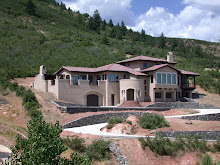The first step in the design of a custom home is the writing of a program. An architectural program is a written description of the proposed house. In residential construction, general concepts, the look and style of the house, the views desired, the materials wanted; all go into the program. A list of spaces with their requirements is made. Sizes and square footage are estimated and a rough cost estimate is made using a current dollars per square foot cost figure.
A general description of the proposed house might include comments on the site. How many acres is the property? Are there views? Are there rocks, trees and shrubs? How is access gained? Utilities and services should be considered. What is the look or style desired? What materials are favored? Is the house to be energy conserving or solar?

 When describing a space, all details are included. In a kitchen, all the appliances that are wanted are listed, the general look, the lighting, cabinet types, what kind of counter tops are desired, an island versus a peninsula and the kitchen's relationship to other spaces are all noted. In a great room, is there to be a fireplace? A TV? What kind of furniture? If a fireplace is desired, where is the house located? Some locations require a gas fireplace instead of wood (to reduce pollution). What does the client want? Are there enough trees on the property to provide a wood source?
When describing a space, all details are included. In a kitchen, all the appliances that are wanted are listed, the general look, the lighting, cabinet types, what kind of counter tops are desired, an island versus a peninsula and the kitchen's relationship to other spaces are all noted. In a great room, is there to be a fireplace? A TV? What kind of furniture? If a fireplace is desired, where is the house located? Some locations require a gas fireplace instead of wood (to reduce pollution). What does the client want? Are there enough trees on the property to provide a wood source?Next, the architect notes all spaces with their rough sizes and square footages. Sizes are estimated off what is desired, what is required, the budget, comments from the clients and the architect's experience. Listing a bedroom as 8'x6', just to make the total square footage and final budget look good is very poor planning and programming.
Now the square footage of all proposed spaces is added up. I factor in a % for circulation and wall thickness (20% to 25% typically). A total of the proposed finished square footage is arrived at. From here, what's done next varies amongst practitioners. Basically, the finished square footage is multiplied times a dollar per square foot cost estimate. But, walkout space costs less than main floor or upper floor space and simple plans cost less than complex ones.
 My method assumes a garage in proportion to the size of the house. A small house is assumed to have a 2 car garage and no square footage is added to reflect this garage. If a small house client desires a 3 car garage, the dollars per square feet must be higher or some sum of money must be added to cover the cost of the larger garage. Walkout space (basements), costs less, so I use a lower dollars per square foot cost (often 50% of the main floor cost). Then the main floor and upper floor area is multiplied times the full dollar per square foot cost. Finally, all these costs, plus the costs of any special, extra features (an elevator is a good example) are added, giving a rough estimate of the expected construction cost.
My method assumes a garage in proportion to the size of the house. A small house is assumed to have a 2 car garage and no square footage is added to reflect this garage. If a small house client desires a 3 car garage, the dollars per square feet must be higher or some sum of money must be added to cover the cost of the larger garage. Walkout space (basements), costs less, so I use a lower dollars per square foot cost (often 50% of the main floor cost). Then the main floor and upper floor area is multiplied times the full dollar per square foot cost. Finally, all these costs, plus the costs of any special, extra features (an elevator is a good example) are added, giving a rough estimate of the expected construction cost.A good program then goes through a series of revisions. If the proposed budget is too high, the overall size is reduced or some spaces eliminated or rearranged. If something needs to be added, it is (a wet bar or a 1/2 bath is typical). These revisions are continued until a final program is agreed upon. This written program is then used as the basis for designing the home.


No comments:
Post a Comment